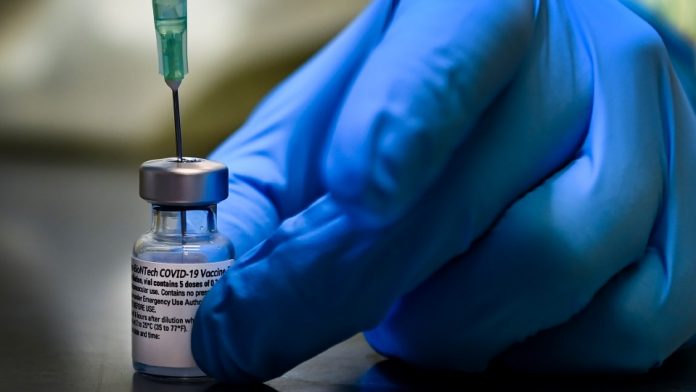Daniel Bouie, 20, was the very first person in line at the Bell Centre’s pop-up vaccination clinic, an initiative organized by the local health authority in order to facilitate access to vaccines for young people.
Bouie’s friend had finally convinced him to come get his first shot of the COVID-19 vaccine.
“I just don’t like needles, that’s it,” Bouie said.
The province’s data shows that 18-39 year-olds are trailing behind everyone else in either getting their first shot or making an appointment to do so.
Some of the reasons for their reluctance include a lack of knowledge on how vaccines work.
“A lot of them hear these conspiracies online, things like that,” said Ishanul Islam, Bouie’s friend.
How do COVID-19 vaccines work?
Dr. Don Sheppard, immunologist and director of the McGill Interdisciplinary Initiative in Infection and Immunity or MI4, says all vaccines do the same thing: they deliver a tiny piece of the virus to train your body how to fight it.
But there are different ways to deliver that training.
Vaccines such as AstraZeneca are called viral vector vaccines. They use a crippled virus to deliver the coronavirus spike protein.
It’s called a hybrid virus, because you take the virus that causes the cold and put the gene of the coronavirus spike protein in it.
There are also mRNA vaccines such as Pfizer and Moderna.
These vaccines use mRNA, the part of the coronavirus’ genetic code which creates its spike protein.
Scientists then put that code inside a tiny fat pouch called a nanolipid. Think of it like putting a message in a bottle.
The recipients are your body’s cells responsible for printing the proteins your body needs to survive.
The cells scan the instructions or code the vaccine carries and print proteins that look like COVID-19.
The harmless proteins will teach our immune system how COVID-19 looks like and will trigger the production of the antibodies needed to fight the virus.
“When you inject the RNA into your arm, your cells take it up and they actually turn to little spike protein factories, as long as that RNA hangs around,” Sheppard said.
Sheppard adds that mRNA has a short shelf life, it disappears.
But your immune system has a memory and will now know how to make antibodies.
“What people don’t realize is it isn’t a brand-new technology,” said Dr. Drew Weissman, professor of medicine at the University of Pennsylvania.
“Moderna, BioNtech and many others have been working on this platform for many, many years. We had clinical trials in people five years ago using this platform.”
Weissman is one of the pioneers of mRNA science. He’s been working on it for 23 years, ironing out every detail.
“We haven’t seen any long-term unexpected adverse events, which is people’s biggest concern. But you see those within the first six weeks and it’s been up to a year of people being immunized and we’ve seen nothing. So it’s a completely safe vaccine,” Dr. Weissman says, speaking of mRNA COVID-19 vaccines.
































